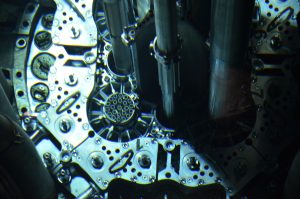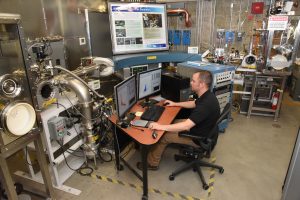Isotope Production
What is the DOE Isotope Program?
Idaho National Laboratory is a part of a consortium of national laboratories and universities focused on isotope research and development and production known as the U.S. Department of Energy Isotope R&D and Production Program (DOE Isotope Program). Managed by the U.S. Department of Energy’s Office of Science, the program’s mission is to produce and distribute stable and radioactive isotopes for research and applications that are in short supply and critical to the prosperity and security of the nation.
The DOE Isotope Program supports isotope production, R&D of isotope production techniques, workforce development and reduction of U.S. dependency on foreign supply chains. Those interested in purchasing stable or radioactive isotopes from the DOE Isotope Program should contact the National Isotope Development Center.
Isotope Production Capabilities
Advanced Test Reactor: Cobalt-60
In addition to producing plutonium-238 for NASA’s deep space exploration missions, the Advanced Test Reactor (ATR) at INL is the only U.S. source of the valuable medical grade cobalt-60 isotope needed for “gamma knife” therapy used to treat brain tumors.

Cobalt-60 is a powerful source of gamma rays which, when directed in a focused beam at cancerous tumors, can dramatically improve patient outcomes and even eliminate certain types of cancer entirely. The technique’s precision allows doctors to treat tumors in difficult-to-reach parts of the body, such as the brain, while limiting impacts to the surrounding organs.
Cobalt-60 is produced at ATR by irradiating, in a neutron flux, multiple targets containing thousands of small pellets of Cobalt-59. Cobalt-60 is then shipped to customers who encapsulate the pellets into smaller sources that are used for cancer treatment in radiotherapy machines.
The isotope also has other applications, including in industrial radiography to check buildings for structural defects and in insect sterilization for pest control.
Radioisotope Electromagnetic Isotope Separator: Neptunium-237
The Radioisotope Electromagnetic Isotope Separator (RAD EMIS) at INL is producing enriched neptunium-236 as its first major project for the DOE Isotope Program. This long-lived isotope is used as a standard for mass spectrometry to identify neptunium-237 in environmental samples.

Developed in 2015, the RAD EMIS is the only electromagnetic separator in the United States designed to enrich actinide isotopes. The machine uses thermal vaporization and electron impact ionization to produce ion beams. This technique separates lighter isotopes from heavier ones by creating two isotope streams (i.e. neptunium-236/-237 or uranium-237,-238) and redirecting a greater proportion of the lighter isotopes with a magnetic field. RAD EMIS includes shielding for protection and was designed for remote operations, efficient use of precursor isotopes and the rapid recovery of short-lived isotopes.
Over the next several years, the team will focus on isolating uranium-237 from uranium-238, which can be produced by high energy Bremsstrahlung photonuclear reactions. The DOE Isotope Program is also evaluating enriching isotope products from high energy proton and deuteron irradiations, some of which may be enriched and purified using the RAD EMIS at INL.



